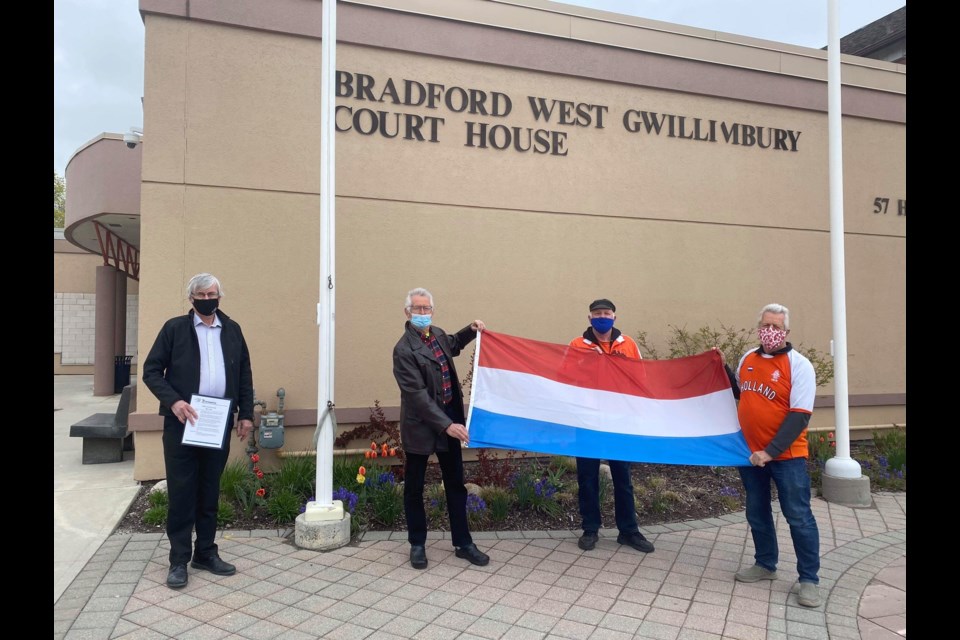Every year on May 5th, the Parliament of Canada recognizes ‘Dutch Heritage Day’ (also known as Bevrijdingsdag – Netherlands Liberation Day), commemorating the sacrifices made by Canadians to liberate the Netherlands from the German invasion during WWII, and forging a unique bond between the two countries.
On Wednesday May 5, the Dutch flag was raised in front of the Bradford courthouse by Mayor Rob Keffer, accompanied by local resident Albert Wierenga who has significant Dutch roots, his brother Carl Wierenga, and longtime resident Cor Den Bleker.
The annual flag raising signifies the end of the German occupation in the Netherlands in 1945 where over 7,600 Canadian soldiers were killed in a successful attempt to free the Netherlands.
“The emphasis is on the royal family from 1940 onward and the birth of Princess Margriet on Canadian soil, which was declared Dutch soil so she could be born Dutch,” explains Wierenga whose father fought in the war and grandfather in-law was one of the original settlers. “For me, 1945 is more important. That's when Canadians were instrumental in freeing The Netherlands.”
Both of Wierengas parents lived in the Netherlands during the war and helped shelter refugees. He has organized the last two annual flag raisings with the Town of Bradford West Gwillimbury because of the community’s strong Dutch ties.
“We [are] very much a Dutch community with the Holland Marsh being developed by the Dutch farmers,” he says.
When the Dutch royal family took refuge on Canadian soil during the Second World War, the room in the Ottawa Hospital where Princess Margiet was born was declared “extraterritorial” for the first time in history, allowing the princess to retain her Dutch royal roots and therefore securing her succession to the throne.
Such a historical event triggered Canadian troops to merge with British, Polish, American and Dutch Infantry who stormed the beaches of Normandy, fighting for freedom and eventually forcing the Germans to retreat.
In appreciation of this tremendous sacrifice, traditionally and historically, the Dutch began to send tens of thousands of tulip bulbs every year to Ottawa where the princess was born, and communities alike continued the tradition, planting tulip bulbs at the grave sites and cemeteries of those who died for our freedoms.
During this year’s flag raising, Wierenga shared a story about a Canadian soldier name Harold Wilbur Roszel who fought in the Second World War whose initials were carved in a tree discovered in a Dutch village called Eelde, about 30km from where Wierenga grew up.
Today, over one million Canadians can trace their heritage to Dutch roots, as over 200,000 Dutch immigrants settled all across Canada, providing a historical bond between Canadians and the Netherlands.
To learn more about Private Harold Wilbert Roszel, visit: How a WWII soldier's initials carved in a tree connected a Dutch village to Toronto | CBC News
